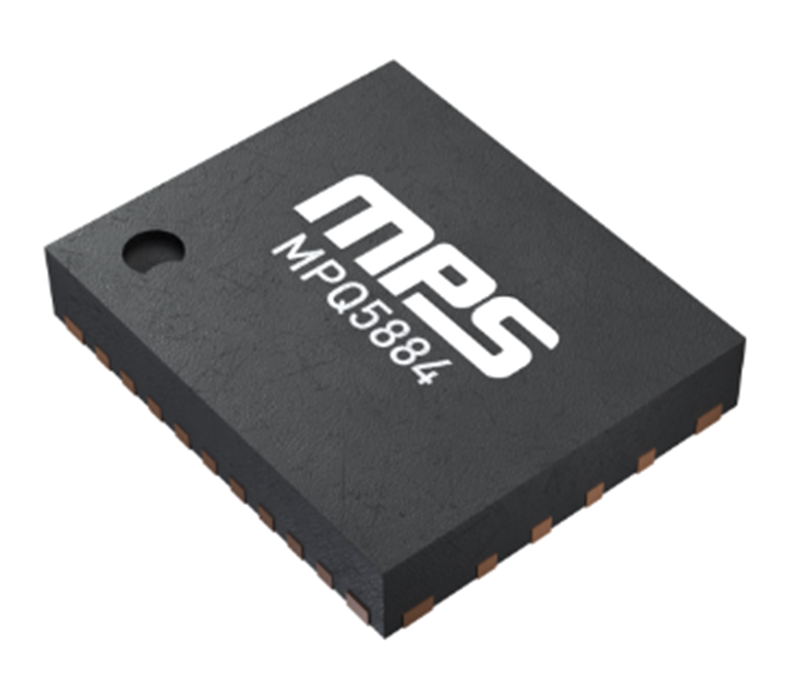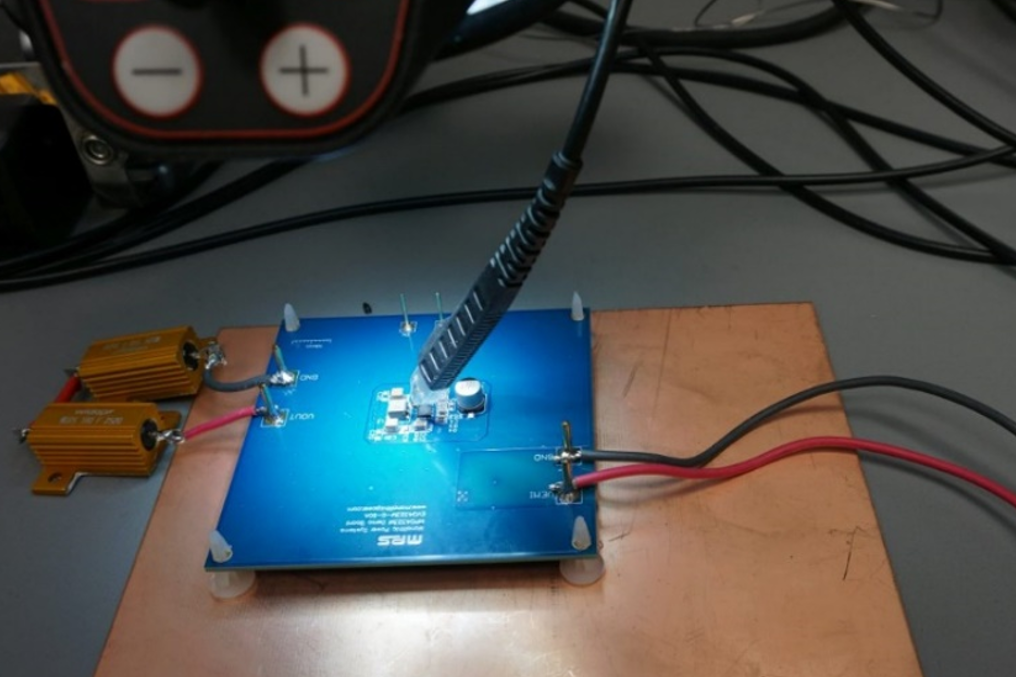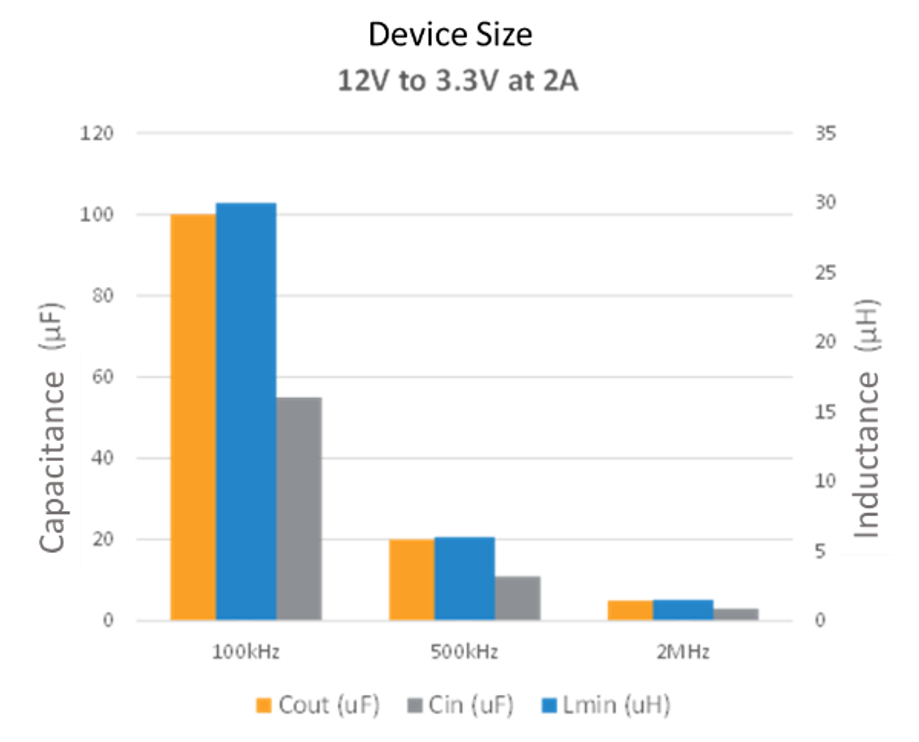Reliability and Robustness
The increasing fusion of electronics and networking in contemporary automobiles underscores the demand for a dependable and sturdy communication framework. The dependability of these systems becomes more important as vehicles become more interlinked. This section explores the significance of reliable communication in vehicles and tactics to make sure the automotive networking’s robustness.
Importance of Reliable Communication in Vehicles
Safety Considerations: Numerous automotive features, including adaptive cruise control, lane-keeping systems, and anti-lock braking systems (ABS), depend on consistent and accurate communication among diverse components. System malfunctions, and jeopardizing passenger safety may result in any communication failure.
Performance Enhancement: Improved communication reliability optimizes vehicle performance by facilitating seamless interaction among critical systems, including engine control units (ECUs), suspension, and transmission components. This results in a more responsive and smoother driving experience.
User Experience: To offer an agreeable and fulfilling user experience, modern vehicles need reliable communication to provide navigation services, connected services, and advanced infotainment systems.
Maintenance and Diagnostics: Dependable communication enhances diagnostic capabilities and enables predictive maintenance, resulting in decreased vehicle downtime and extended longevity.
Strategies to Ensure Robust Communication
Redundant Systems: Introducing redundancy to essential communication routes guarantees seamless continuity in the event of a communication channel failure, as an alternative channel can seamlessly take control. In safety-critical systems, this redundancy plays a crucial role where failure is not an option. To offer high fidelity communication for automatic lane-keeping operations, a good instance is the Steering Wheel Module connection to the ADAS system through a dual-channel FlexRay network.
Error Detection and Correction Protocols: In identifying and rectifying data transmission mistake, the use of advanced error detection and correction algorithms are helpful. In guaranteeing data integrity, protocols like Error Checking and Correction (ECC) have an imperative role.
Quality of Service (QoS) Mechanisms: By incorporating Quality of Service (QoS) mechanisms, you can prioritize critical data within the network, resulting in reduced latency and mitigating potential conflicts with non-critical data streams. For instance, the arbitration process ensures that nodes having lower identifier number communicate their messages first in CAN communications.
Rigorous Testing and Validation: To ensure the system's readiness for real-world challenges, comprehensive testing is carried out across a range of scenarios, containing extreme environmental conditions such as minimum and maximum operating temperatures, simulated failures, and EMI requirements commonly known as fault injection tests.
Physical Layer Considerations: By carefully choosing suitable cables, shielding, and connectors, you can effectively avert physical interference and signal degradation, thereby enhancing the resilience of your communication system.
In automotive networking, reliability and robustness are important requirements controlled by numerous standards. In today's increasingly intricate automotive landscape, where vital functions rely on interlinked systems, a seamless communication infrastructure becomes imperative. For attaining this objective, tactics such as error correction, quality of service, redundancy, and careful testing have a significant role. To ensure an efficient, safe, and engaging driving experience, engineers and designers must consider these elements in the automotive networking fabric. The automotive industry must grasp the importance of these factors and meticulously put them into practice to sustain a culture of innovation and uphold the utmost standards of reliability and robustness.
Real-Time Communication
Along with playing a vital role in automotive networking, real-time communication is crucial for both safety and improved functionality. Real-time data exchange among a vehicle's diverse subsystems now serves as a pivotal element for shaping the advancement and integration of automotive networks. In this section, we will delve into the necessity of real-time communication, and investigate the specific real-time operating systems and protocols employed within the realm of modern vehicles.
Understanding the Need for Real-Time Data Transfer
Safety-Critical Systems: Any delay in communication of functions like steering, braking, and collision avoidance, may prove to be disastrous. To lessen the accidental risks, real-time data transfer is essential to guarantee correct function and quick response.
Enhanced Driving Experience: Real-time communication among actuators, controllers, and sensors is required by features such as automatic parking, and adaptive cruise control. A smooth and pleasant driving experience can be caused by the immediate data transfer.
Energy Efficiency: For improving efficiency and range, the real-time communication between the powertrain, battery management system, and other elements in hybrid and electric vehicles boosts optimal energy consumption.
Real-Time Operating Systems and Protocols
Real-Time Operating Systems (RTOS)
- Functionality: To process crucial data having tight time frame, RTOS is developed to ensure that handling or monitoring will be displayed with a specified time.
- Examples: In automotive sector, QNX, VxWorks, and AUTOSAR are greatly utilized RTOs.
- Applications: RTOs are installed on microcontrollers within ECUs responsible for overseeing safety-critical functions, such as managing engine control, airbag deployment, and Advanced Driver Assistance Systems (ADAS).
Real-Time Communication Protocols
- CAN (Controller Area Network): CAN guarantees real-time communication with systems such as priority-based message arbitration used for critical systems.
- FlexRay: FlexRay offers greater bandwidth compared to CAN and provides a deterministic and fault-tolerant communication approach, rendering it well-suited for safety-critical applications.
- Time-Triggered Protocols: Time-triggered Ethernet (TTE) protocols are specifically engineered to facilitate synchronized and real-time communication among various nodes while rigorously adhering to strict timing requirements.
In automotive networking, the requirement for real-time communication is a captivating facet that regulates the efficiency, safety, and user experience of modern automobiles. Comprehending this necessity paves the way for creating specialized real-time operating systems and protocols that guarantee consistent and predictable performance within rigid time limitations. The real-time scenarios of automotive networking have become a crucial component of advanced vehicle architecture, from enhanced energy efficiency to safety-critical operations. The increasing complexity and demands of automotive systems will drive the necessity for resilient, precise real-time communication mechanisms, thus propelling innovation and technology to new frontiers within the automotive sector.
Bandwidth And Throughput
The proliferation of digital technology in contemporary vehicles underscores the vital importance of closely monitoring the bandwidth and throughput in automotive networks. From infotainment to safety-critical systems, the expanding complexity of interconnect equipment needs strong data handling capabilities. In this section, we delve into the importance of bandwidth and throughput, concentrating on the data rates necessary for diverse automotive systems and the critical synchronization of network capabilities with distinct data prerequisites.
Data Rates in Automotive Systems
Contemporary vehicles utilize a diverse range of systems with significantly varying data rate demands. For designing a successful and responsive network architecture, knowledge of these requirements is critical.
Infotainment and Multimedia Systems: To support real-time video and audio streaming, these systems need high data rates. For example, a bandwidth of higher than 1 Gbps is needed for a typical HD video stream.
Advanced Driver-Assistance Systems (ADAS): Real-time data processing from cameras, radars, and sensors is involved in ADAS. To ensure correct and timely responsiveness, these systems need medium to high data rates ranging from 100 Mbps to 1 Gbps.
Control Systems: The lower data rate usually below 1 Mbps is needed for basic control systems such as braking and engine management. However, dependable, and deterministic communication is necessary for their real-time nature.
Diagnostics and Telemetry: Especially for real-time monitoring of vehicle health, these systems usually work at lower data rates but ought to transfer data continuously and reliably.
Matching Network Capabilities with Data Requirements
Selecting Appropriate Protocols and Media: The selection of network protocols and physical media should be in accordance with the data needs of various systems. For example, CAN is ideal for lower data rate control systems, whereas Ethernet is used for high-bandwidth applications.
Quality of Service (QoS) Management: To prioritize critical data and bandwidth allocation as needed, QoS mechanisms are helpful. This guarantees that safety-critical systems are granted the necessary bandwidth, while less crucial services are assigned the remaining resources.
Network Topology Design: The pivotal task lies in crafting a network topology that reduces bottlenecks and guarantees ample bandwidth for every subsystem. To balance efficiency and redundancy, hybrid topologies, using both star and bus configurations, are common in automotive networks.
Future Scalability Considerations: When crafting an automotive network, it's imperative to consider future needs, enabling the provision of added bandwidth as new features and technologies become integrated. This might include preparing for faster physical layers or integrating extra channels.
For displaying the different and demanding data needs of today’s vehicles, bandwidth and throughput are important considerations in automotive networking. From the precise, and real-time demands of control subsystems to the high-speed requirements of infotainment systems, prioritizing the alignment of network capabilities with data requirements is of utmost importance. Attaining this alignment hinges on the careful choice of protocols, deliberate topology design, effective management of Quality of Service (QoS), and contemplation of future scalability - these constitute pivotal strategies. The multifaceted challenge lies in harmonizing network capabilities with data requirements, an essential aspect influencing the functionality, performance, and evolution of contemporary automotive systems. The intelligent design and management of bandwidth and throughput will remain in the first place of automotive engineering as vehicles continue to evolve into more complicated and interconnected systems.
Scalability and Flexibility
With the growth in automotive industry, automobiles are provided with rising complicated technologies that interplay with each other. Within the automotive networks, the difficulty and dynamic nature of automotive systems needs a focus on flexibility and scalability. In this section, we will discuss about the crucial components of adapting to varying system needs and strategies to future-proof automotive networks.
Adapting to Varying System Requirements
For longer sustainability of automotive networks, the ability to adapt to changing system needs is most important. Following considerations come under this adaption:
Modularity and Interoperability: To ensure minimal disruption to the overall system, automotive networks necessitate modularity in their design, permitting the seamless addition, replacement, or upgrading the various components. The seamless functioning of various components, irrespective of their manufacturer, is guaranteed through interoperability.
Dynamic Resource Allocation: There may be a requirement to allocate or deallocate resources dynamically with the changing requirements of system. For example, the network must have procedures to prioritize the mandatory resources in a situation needing greater processing power for ADAS.
Handling Different Protocols: The ability to manage multiple communication protocols becomes necessary as vehicles including advanced technologies. To serve the different requirements of vehicle subsystems, a scalable network must accommodate various data transmission standards, such as LIN, CAN, and Ethernet.
Balancing Efficiency and Redundancy: A balance between redundancy and efficiency must be provided by a flexible network. Although it's important to streamline a network for cost and complexity reduction, it should also incorporate backup pathways for enhanced robustness, such as the inclusion of dual communication channels between ECUs.
Future-Proofing Automotive Networks
The design and deployment tactics that allow a network to fulfil both present and predicted future demands are referred to as future-proofing. Main elements of future-proofing include:
Provision for Bandwidth Expansion: The bandwidth needs will unavoidably rise with the continuous introduction of new technologies like augmented reality dashboards and autonomous driving. Incorporating features like fiber optic cabling to support high data rates and efficient OTA update management into the network design ensures bandwidth expansion without necessitating a full system overhaul.
Support for Emerging Technologies: By keeping an eye on continuously evolving technologies, such as Vehicle-to-Everything (V2X) communication, automotive networks must be built. To elevate the performance of current systems, this consists of making interfaces that support adopting machine learning algorithms, or advanced communication protocols.
Standardization: Following the industry standards guarantees the network's readiness for the integration of emerging technologies, such as advanced self-driving capabilities, as they gain widespread adoption. Standardization cultivates compatibility among diverse components, simplifying the process of managing upgrades and additions.
Long-term Vendor Support: To keep the network aligned with the advanced technological trends without requiring constant replacements, being with the vendors who offer support and updates for their products, is helpful in the long run. For instance, to let the networks manage new self-driving features, the vendor releases firmware updates as autonomous driving advances. Improved algorithms for object collision, avoidance, detection, and adaptive cruise control are included in these updates.
The flexibility and scalability themes are important to automotive networking. In the face of relentless technological progress, automotive networks should possess the flexibility to adjust to an ever-evolving environment. They should be capable of accommodating diverse system requirements while retaining a forward-looking perspective. Emphasizing interoperability, support for emerging technologies, dynamic resource allocation, modularity, future-proof bandwidth provisioning, standardization, and sustainability enables automotive engineers to create networks that are not only resilient to current demands but also ready to embrace future innovations. Following these principles not only nurtures the development of sturdy and flexible networks but also plays a significant role in sustaining an automotive ecosystem that remains attuned to the ever-changing demands of technology, society, and the environment.
Security and Safety
Vehicles are increasingly interconnected, internally as well as externally, in modern automotive systems. Along with future capabilities, this interconnectivity also introduced risks and vulnerabilities that need strong safety and security measures. In this section, let’s have a closer look at the crucial facets of safety and security in automotive networking.
The Importance of Secure Communication in Automotive Networks
Confidentiality: It is imperative to secure the sensitive information transmitted by vehicles, such as driver behavior, location, and personal preferences, from any unauthorized access. Data breach and theft is prevented by confidentiality measures like secure communication channels, and encryption techniques.
Integrity: Data integrity is the key to the proper functioning of a vehicle. Incorrect functions or misinterpretations can be caused by manipulation or corruption of data that will eventually result in potential safety hazards.
Authentication: Preventing malicious entities from impersonating legitimate elements within the vehicle or external services is achieved by authenticating the source and destination of communications. During an over-the-air software update, an illustrative scenario involves the vehicle's control unit verifying the digital signature of the incoming update package. If the signature proves to be valid, the update is executed; otherwise, it is declined to prevent the installation of malicious software.
Availability: For both security and safety, it is crucial to guarantee that systems can withstand denial-of-service attacks and continue operating even in adverse conditions. For instance, to ensure the vehicle remains operable and the driver is in control, the backup system maintains control in case an attacker targets one system to induce a denial-of-service attack.
Compliance: Specific security measures are usually mandated by regulations and industry standards. Abiding by these requirements serves not only as a legal duty but also encourages the best practices in secure communication.
If vehicle control systems are compromised, the after-effects of avoiding these security aspects can range from privacy breaches to life-threatening situations.
Safety Mechanisms in Automotive Networks
To keep the correct operation of a vehicle, specifically, when encountered with faults or malicious attacks, safety procedures are designed. Major safety processes for networking and software include:
Fault Tolerance: A failure in one part of the network does not lead to an overall system failure if redundant systems and error-checking protocols are deployed.
Real-time Monitoring and Response: Immediate action to mitigate risk is provided by safety-critical systems monitoring network activity for signs of failures or intrusions.
Isolation and Segregation: Failures or attacks on one system from spreading to others are prevented by isolating safety-critical systems from non-critical systems. For this purpose, tactics like firewalls and virtualization are used.
Secure Boot and Hardware Security Modules (HSMs): These mechanisms guarantee that exclusively approved software is executed on electronic control units (ECUs), offering a secure environment for storage and processing.
Encryption and Secure Communication Protocols: It is not easy to decipher or manipulate the intercepted data if using safe communication protocols along with encrypting data.
In automotive networking, the twin pillars of security and safety are important to the modern vehicle’s design. Security doesn't solely revolve around safeguarding data; it plays a direct role in ensuring the safety of both the vehicle and its passengers. A strong defense against potential threats is provided by implementing a layered process that merges numerous strategies. With the emergence of connected and autonomous vehicles reshaping the automotive industry, the challenges and solutions for guaranteeing secure and safe operation will also undergo transformation. Designers and engineers should maintain a vigilant and adaptable approach, blending established practices with innovative methodologies to address these vital requirements.







直接登录
创建新帐号